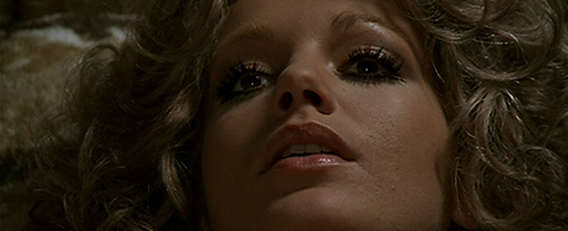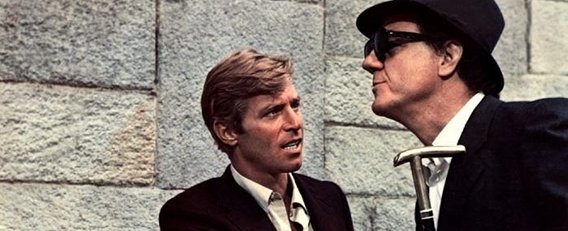
Success usually comes with a price. For some, it is the alienation of their closest friends. For others, it is their downward spiral into addiction and self destruction. For Dario Argento, it was being pigeonholed. His directorial debut, L’uccello dalle piume di cristallo (aka The Bird With the Crystal Plumage), had become an international success and both fans and his investors expected more of the same. CCC Kunst, or Terra-Filmkunst as they became, were a German-based company who had helped fund his previous effort and were now demanding something similar for his sophomore feature. The impact of The Bird With the Crystal Plumage convinced other filmmakers to attempt their own variations, usually containing references to animals in their titles – Una lucertola con la pelle di donna (Lizard in a Woman’s Skin), La tarantola dal ventre nero (Black Belly of the Tarantula), The Case of the Scorpion’s Tail (La coda dello scorpione) and Non si sevizia un paperino (Don’t Torture a Duckling). Unsure on how to progress, Argento retreated to Morocco to unwind and soak in the success of his first movie.
Two of his friends, Dardano Sacchetti and Luigi Collo, remained at his villa in Via Monteleone and decided to collaborate on a story. After reading an article in the Scientific American Magazine, they began to toy with a concept that evolved around a theory that had been developed after scientists had experimented with a series of patients and had discovered that those who displayed violent tenancies, such as convicts, carried an extra chromosome that dictated their behaviour. After presenting their premise to Argento, he immediately sensed the potential and locked himself away at his Via Tito Vivio home to write what would become a forty page treatment. Despite wanting to distance himself from the giallo format, he knew that going against everyone’s expectations could be a career suicide and so attempted to mould the story into something similar to The Bird With the Crystal Plumage, albeit with a more scientific approach.
The resulting effort, Il gatto a nove code (The Cat O’ Nine Tails), opened with Franco Arno, a blind and retired journalist who, along with his young niece, Lori, overhears a suspicious conversation between two men. The following morning, it is revealed that the building next door, a science laboratory, was broken into and that one of the men had been murdered. With the help of newspaper reporter, Carlo Giordani, Franco becomes increasingly obsessed with uncovering the truth behind the recent series of deaths, finally discovering that the chromosome tests had revealed that one of the scientists carries the violent genetic makeup, and thus he had attempted to cover up the test results by killing his colleagues. The identity of the murderer is a mute point, as the character is hardly glimpsed throughout the story and so at no time had he ever been a suspect. But, as with Argento’s later films, it is not the big reveal that is of interest here but the journey that leads the characters there.
Despite critics often categorising The Cat O’ Nine Tails as the second of his Animal Trilogy, the title is not in fact a reference to a cat, or the multi-tailed naval whip, but to a series of nine clues that the protagonists are trying to solve in order to discover the identity of the killer. Neither The Bird With the Crystal Plumage or his third feature, 4 mosche di velluto grigio (Four Flies on Grey Velvet), were in relation to their plots, but usually a clue of some kind that helps the characters uncover the truth. Whilst fitting nicely into the giallo genre, Argento had also intended to inject elements of the spaghetti western, which had become a major staple of Italian cinema during the sixties. Franco was based on the old blind man that most westerns would feature, whilst Carlo was the young blonde antihero, good enough to win over the audience’s sympathy but still boasting an attitude and an aggressive sexual nature. It is worth noting that prior to his directorial career, Argento had assisted in the developing of the story for Sergeo Leone’s classic C’era una volta il West (Once Upon a Time in the West).
The Cat O’ Nine Tails would consist of a more established cast than The Bird With the Crystal Plumage, largely due to the involvement of its American investors, who had insisted on the role of Carlo going to rising star James Franciscus, whose recent turn in Beneath the Planet of the Apes had brought him international acclaim. The German producers, meanwhile, had pushed for French model Catherine Spaak, who had recently enjoyed success in Europe with her cover of Quelli Della Mia Eta. Argento himself had decided on which actor he wished to portray his blind hero, approaching Academy Award winner Karl Malden, whose impressive back catalogue had included Kiss of Death, A Streetcar Named Desire, On the Waterfront and Birdman of Alcatraz. Other cast members would include Rada Rassimov (Il buono, il brutto, il cattivo, aka The Good, the Bad and the Ugly), Carlo Alighiero (Lo strano vizio della Signora Wardh, aka The Strange Vice of Mrs. Wardh) and Fulvio Mingozzi (The Bird with the Crystal Plumage).
The Cat O’ Nine Tails was budgeted at approximately $1m, around twice the amount of his first movie. This was primarily due to the involvement of Malden and Franciscus, whose status would help raise the profile. Another addition was famed composer Ennio Morricone, whom he had become friends with after Morricone had scored a film for his father. The two had been involved with Once Upon a Time in the West but Argento had left the project by the time the music was composed, but Morricone had told the wannabe director that if he ever made a movie of his own that he would compose it. True to his word, the two would collaborate on The Bird With the Crystal Plumage, with Morricone returning once again for The Cat O’ Nine Tails. This time around, the score would display a childish element, with the main theme tune usually played during scenes with Franco and Lori, played by an eleven year old Cinzia De Carolis, who would later come of age in Antonio Margheriti’s notorious Apocalypse domani (Cannibal Apocalypse/The Cannibals Are in the Streets).
Filming began on September 3 1970 (a little over six months after the release of The Bird With the Crystal Plumage) in Rome and Turin, with most of the interiors shot at Cinecittà Studios in Rome. To prepare for his role, Malden had attended a school for the blind, a new challenge as an actor which he relished. For the climax, in which the killer is revealed, only to fall to his death down an elevator shaft, the production and set designer built a seven metre shaft in which a camera was placed at one end and the actor lay at the other. For the effect in which smoke appears from his hands as he attempts to grab hold of the cables to stop his fall, sparklers were placed on his palm with leads running up his sleeve, whilst a fan was placed below to blow the smoke up. The shoot lasted until October 29, although Argento himself seemed less than impressed.
The Cat O’ Nine Tails would have a troubled history. Whilst The Bird With the Crystal Plumage had been an unexpected success, the knives were out in anticipation for what the young director would produce next. In America, the movie was distributed by National General Pictures on May 21 1971, who would butcher its 112 minute running time down to a mere 90 minutes. One of the most censored scenes involved a character being pushed in front of a train, with the majority of the gruesome effects being cut so when he falls onto the tracks it immediately jumps to a reaction shot of the crowd. Upon its initial release the film was a financial failure but word-of-mouth slowly built up momentum and the movie eventually became a success, although far less than its predecessor. Its release on video saw the film treated to an inferior pan-and-scan treatment, which obscured much of Argento’s inventive directing and thus reduce its effect. The director has since stated that The Cat O’ Nine Tails is his least favourite of his own work, although over the last thirty-plus years the movie has gained a cult following.


4 Responses to SPAGHETTI SLASHERS – The Cat O’ Nine Tails